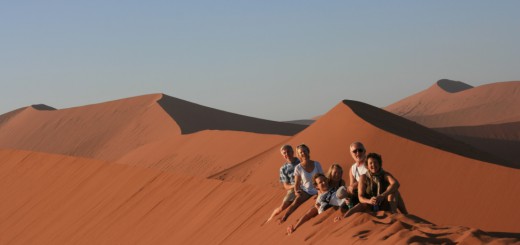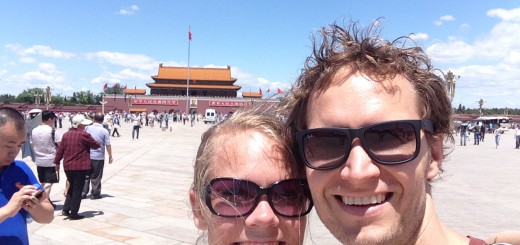The Okavango Delta and the trip to Windhoek, Namibia
‘Since last time, our trip has been filled with new experiences! We stayed at a really nice lodge in Maun where we slept in tents and relaxed a couple of days before we headed into the Okavango Delta. The delta is 16,000 sq km big and hence the largest inland delta in the world! Locals have for centuries used small dugout canoes, mokoros, motored by a man with a long pole to get around in the delta. Since we are on a budget, we couldn’t afford to fly into the inner delta and our only option was to travel into the delta in a mokoro :-).
We spend two nights and three days on a campsite in the delta. Though it was a cheap budget tour, we each had our own mokoro, poler and a chef to cook our food. During the day, we hiked through amazing nature on some of the islands in the delta with our guide, who where outstanding at spotting wildlife (we tracked animals by following their footprints – hippos have giant feets!). The rest of the day was spent relaxing by the fire at the campsite or drifting silently through the delta in the mokoros. The nights in the delta are beautiful, without electricity, the amount of stars are enormous.
After the trip into the Okovango delta, our time in Botswana was up and Namibia the next stop. The distance between Maun and Windhoek, the capital of Namibia, is a little more then 800 kilometres and again the public transportation was tricky. If the eastern Botswana has bad public transportation, the western Botswana is almost impossible to cross without a private car! We did however manage to track down an scheduled bus, which would take us the first 300 kilometres. After standing at the bus station waiting for an hour after the scheduled departure, we gave up on all of Botswana’s public transportation, finally!
Obviously, only one last resource of transportation existed, hitching. Two Scandinavians, five goats and three chickens were standing under a big tree outside Maun and during the two first hours, 27 cars passed them (we did actually count :-)). Eventually a friendly not-so-much-english-speaking man picked us up in his truck. He gave us a 400 km ride and left us standing on an even more deserted road (see photo). Stranded in the middle of nowhere with no cars passing, Carsten began to make contingency plans for staying the night there! Finally a man picked us up in his beaten up Toyota which managed to drive 180 kmp/h (probably more information than Danielle’s mother would like to have :-)). He left us 10 km from the Namibian border on the same deserted road. After only 10 minutes our saviour came by – a South African moving to Namibia with all his belongings. He not only wanted to give us a ride, but acted as our father for the remainder of the trip (“Don’t forget your passports?”, “Have you got enough money?”, “Did you check if you left any stuff in your room?”). He took us to the other side of the border where we slept in a hostel and the day after he drove us all the way to Windhoek! We ended up travelling 800 km for 50 SEK (6 USD) – fantastic!
We are now staying at a hostel in Windhoek, which is known as one of the cleanest cities in Africa. The one thing contaminating the city is the uncountable number of German tourists (sorry, Jörg :-)) – Welcome to little Germany, everybody speaks German, acts German and everything is written in German. The next couple of days will be spent relaxing in Windhoek before we head off on our 6 days safari trip to Etosha National Park and Sossusvlei.



Latest comments